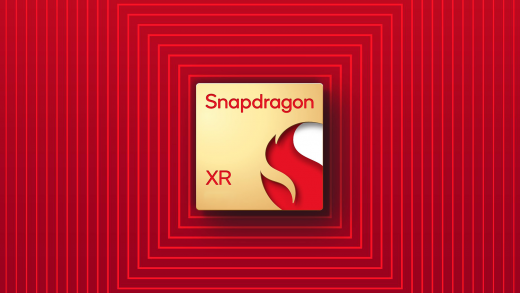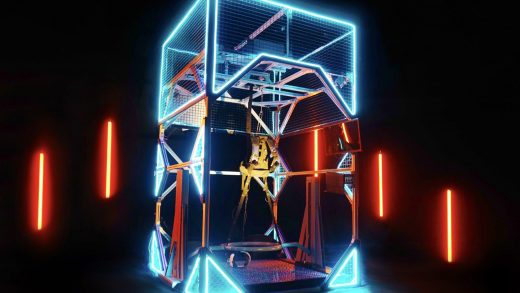
Released: 1996
Genre: Adventure
Format reviewed: Sega Saturn
Publisher: Eidos
Developer: Core Design

This review originally appeared in Sega Power issue 86, December 1996
Has the best ever third-party game just arrived for the Saturn? Well you’ll just have to read the review, won’t you.
Tomb Raider has always looked a bit special. When we previewed it (exclusively, I might add) back in Issue 78, we had to double-check which shots were artwork and which actually came from the game. We’ve been following the game’s progress ever since and now seven months later we finally have our finished copy.
I must admit to a degree of pre- game cynicism. Can a game that looks and moves as well as Tomb Raider possibly have the depth of gameplay to make it the classic many are hailing it as? Remember, the usually unflappable journos on certain PC mags are hailing Tomb Raider as the nearest thing to Mario 64, that will appear on the PC. There’s been hype, there’s been merchandising, there’s been an all-expenses paid trip to Egypt but we’ve seen this kind of thing before and when the games finally arrived, they never lived up to expectations.
Happily though, Tomb Raider is one of, if not the Game of the Year. It’s part shoot-’em-up, part platform adventure, part role-playing game all seamlessly integrated into one of the most impressive graphical packages ever seen on the Saturn. There are places in Tomb Raider where the graphics are so good, you just want to stand and stare at them and you probably will.
The game follows the adventures of Lara Croft an Indiana Jones type in a worryingly- exaggerated female body. She’s been hired by a global Mega Corps to track down an ancient artifact called the Scion. However, once her adventure has started high in the South American Andes it soon becomes clear that darker forces are at work. With the background story safely dispensed with, let’s move on…
The game is divided into four sections with four subsections in each. If you knew exactly what to do in each section (and could manage to do it), it would take over 100 hours to complete the game – immediately allaying one of our major fears: that the game would be too short. The major thrust of the game is exploration. Explore the areas open to you to find switches (to open further sections) or objects such as keys. A lot of the areas that you’ll enter are populated by enemies – usually animals quite keen on biting, scratching or chomping you to death. These must be ruthlessly gunned down with a variety of weapons. One for the animal rights people, there.

The game uses a unique ‘floating camera’ technique that follows Lara’s adventures from behind and above. It’s a mark of the brilliance of this system that as you run from room to room, jump, crash through floors and climb, you hardly ever notice the dynamic changes the camera has to make to keep everything in view. On top of this, in the situations where you need to look very carefully where you’re going to go, the ‘head view’ comes in extremely useful. By holding down the Y button and manipulation the joypad, you can direct the camera in a 180° arc. In fact, Tomb Raider has such a perfect game engine that playing it feels remarkably natural and watching it is almost cinematic.
Game difficulty is set high but the curve is well judged level-to-level. In the initial Andes adventures enemies are lightweight but, more importantly, the skill needed to progress is lower. Although a lot of the gameplay is exploration and puzzle-solving, success is also very much dependent upon a good mastery of the controls. Lara can pull off an impressive array of forwards, sideways, backwards jumps and roles, and to get her to do the most complicated of them, you’ll need to synchronise a four-button/joypad combination. That might not sound too tricky to you Street Kombat, Mortal Fighter-types but in many cases, if you mis-time your jump, it’s game over. The game does include a ‘Gym’ feature where Lara can practice her more difficult moves. You’ll probably ignore this initially but after a few disastrous performances, you’ll probably change your mind.
The major criticism with Tomb Raider is the game save technique it employs. Game positions can only be saved when levels are completed or when you come across one of the blue floating crystals. Now, all would be fine if these cropped up at regular intervals but they don’t – two per bloody huge level is all you can expect to see. On top of that, the cheeky buggers disappear once you’ve used them making the well-worn tactic of ‘do a difficult bit, save, do another difficult bit, save again’ impossible. Of course, making games tricky makes them last longer but it also has the downside of making them EXTREMELY FRUSTRATING IN PLACES.
Tomb Raider stands alongside Exhumed as the best 3D adventure/shooter for the Saturn. Core have developed the game specifically for Sega’s machine and the Saturn version is only bettered by the Accelerated PC edition (which requires a hefty Pentium and an expensive graphics card to run). No dodgy conversions, no shallow gameplay, no cheap Doom rip-offs – buy Tomb Raider and you’ll play it till your eyes go funny. You really must have this game.
GRAPHICS: 10
Brilliant. Total freedom in a beautiful 3D world. Unsurpassed.
SOUND: 9
Clever use of music to suggest approaching danger. Everything else superb.
ORIGINALITY: 9
The first Saturn game to take trad platform elements and bung them in 3D.
LIFESPAN: 9
Difficult enough to last for ages with loads of secret stuff to bump up the replay value.
FINAL VERDICT: 93%
Quite possibly the game of the year. Original, beautiful, challenging – the kind of game the Saturn was made for.
James Ashton



